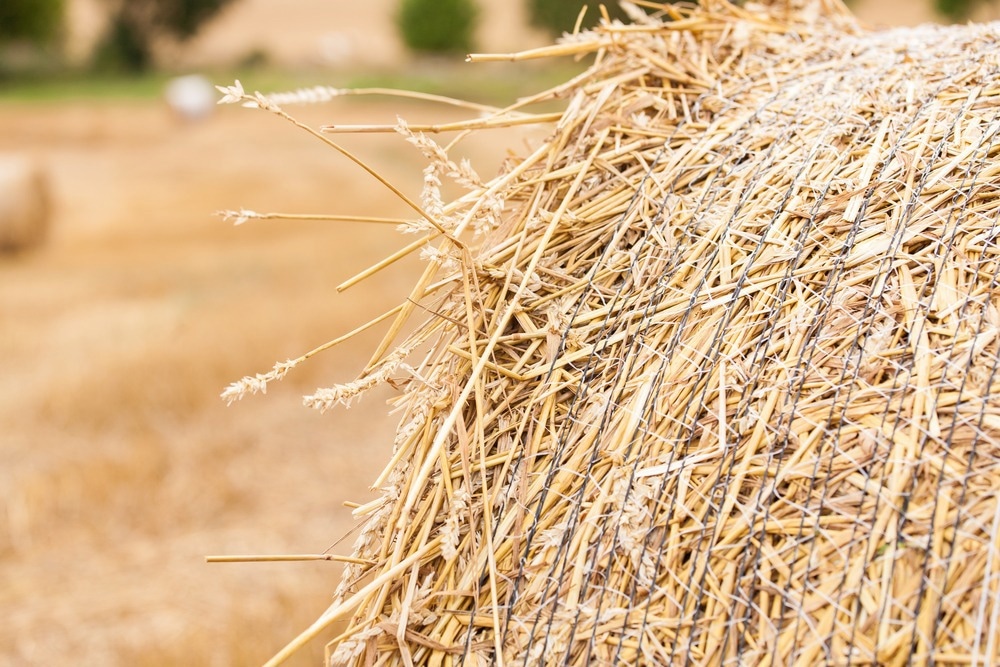Rigorous chemical treatments of pure bleached pulp are the most common approaches used to obtain cellulose nanofibrils. These processes incur significant expenses and are a detriment to the environment.

Study: Lignocellulosic nanomaterials production from wheat straw via peracetic acid pretreatment and their application in plastic composites. Image Credit: OskarsK/Shutterstock.com
A paper published in the journal Carbohydrate Polymers reports the synthesis of lignocellulosic nanofibrils (LCNF) using wheat straw (WS) feedstock. The LCNF shows great promise in bioplastic applications.
Cellulose Nanofibrils – A Green Alternative to Plastics
Products manufactured from green and renewable sources are in high demand. Cellulose, a plenteous natural resource, is renewable, non-toxic, and biodegradable.
Plastic detritus has accumulated because of the regular dumping of non-biodegradable plastics, causing severe contamination of terrestrial as well as marine environments. Cellulose nanofibrils (CNFs) are a more environmentally friendly alternative to plastics in a variety of applications.
The poor manufacturing volume and significant production costs of cellulose nanofibrils prevent them from reaching their true potential in different industries. Therefore, inexpensive and efficient production techniques must be developed to encourage the use of cellulose nanofibrils as viable alternatives to plastics.
How Are Cellulose Nanofibrils Synthesized?
Cellulose nanofibrils are typically made using bleached kraft fibers, a quality raw material providing nearly pure cellulose. The kraft fibers are mechanically fibrillated to extract the cellulose nanofibrils.
Mechanical fibrillation processes require a considerable amount of energy. To advance the fibrillating phase and minimize energy needs, pre-treatment procedures may be used.
An extensively used pre-treatment process for synthesizing cellulose nanofibrils is TEMPO (2,2,6,6 Tetramethylpiperidin-1-oxyl) oxidation. This technique stimulates cellulose fiber oxidation, which increases the charge density on their surface. This ultimately leads to electrostatic repulsion among the cellulose nanofibrils and yields significant fibrillation output.
Drawbacks of Using TEMPO
The downsides of employing the TEMPO oxidation technique include substantial chemical expenses and the toxic nature of TEMPO. Moreover, costly removal methods like dialysis are required to eliminate small quantities of leftover TEMPO from the cellulose nanofibrils, making scalable application of the approach quite difficult.
Fabrication of cellulose nanofibrils needs a more economical conversion technique if the scalable implementation of CNFs is to be achieved.
Developing Lignocellulosic Nanofibrils with Wheat Straw
To avoid the drawbacks of TEMPO oxidation, fabrication of LCNF may be the key. LCNF production requires less expensive lignin-carrying feedstock rather than completely bleached pulp. Moreover, moderate treatment procedures may suffice for LCNF, resulting in high-output products comprised of lignin, cellulose, and hemicellulose constituents.
Production of wheat creates a byproduct known as wheat straw. WS contains the residual stalk left after the harvest of the wheat grains.
Wheat straw acts as a suitable raw material for the fabrication of LCNF because it is abundantly available. Being an agricultural leftover, the expenses of using wheat straw are much less as compared to other raw materials.
Wheat straw therefore provides a low-cost and plenteous non-wooden fiber resource to produce LCNF.
Advantages of Peracetic Acid Treatment
Peracetic acid (PAA) is a biodegradable reagent that can engage in reactions with lignocellulose biomass at temperatures less than 100 °C. Therefore, using PAA for pre-processing of LCNF appears to be a viable strategy.
PAA treatment produces greater yields because of its high oxidizing capability, which selectively eliminates lignin while preventing solubilization of the carbohydrates.
Peracetic acid can trigger the oxidation of the reducing parts of carbohydrates, which results in a negative charge on the surface. This could aid in the nanoscale fibrillation process and produce stable colloidal suspensions.
Compared with the traditional TEMPO oxidation process for cellulose nanofibril synthesis, peracetic acid treatment provides several benefits. PAA has lower toxicity and is ecologically friendlier than TEMPO, and it allows more control over the removal of hemicellulose and lignin from the pulp material.
The architecture and content of nanofibrils generated by peracetic acid treatment differ significantly from the cellulose nanofibrils produced by traditional TEMPO oxidation.
Applications of Cellulose Nanofibrils in Plastic Composites
Cellulose nanofibrils may be utilized as reinforcements in plastic composites to minimize the quantity of petroleum components while also improving the characteristics of the plastic composites.
Hydrophilic and biodegradable polymers, like polyvinyl alcohol (PVA), show weaker mechanical characteristics than their synthetic alternatives, necessitating the addition of different additives to improve their qualities.
Higher aspect ratios and better interface interactions with the polyvinyl alcohol array enable cellulose nanofibrils to enhance the mechanical properties of PVA nanocomposites when introduced in small quantities (<5% wt.).
Results of the Study
The team showed that it is possible to fabricate lignocellulosic nanofibrils having excellent plastic reinforcement characteristics using low-cost agricultural residue. They achieved this by alkaline peroxide pulping, after which the LCNF was treated with PAA.
The lignin and hemicellulose parts of the nanofibrils, formed using wheat straw, were retained, which was critical for enhancing productivity.
While the PAA treatment generated nanomaterials with a lower charge density on the surface than TEMPO oxidation, the material characteristics were unaffected. All specimens demonstrated high colloidal stability under aqueous conditions.
PAA-treated materials improved thermal stability due to their decreased charge density and increased lignin level. Furthermore, irrespective of charge density, all nanofibrils dispersed well in the polyvinyl alcohol matrix. This enhanced the tensile strength and Young's modulus of the composites, showing a unique case of concurrent strengthening and toughening.
The study established a novel way of producing lignocellulosic nanofibrils from agricultural residue. This economically feasible approach has the potential to enable scalable production of nanomaterials with commodity product costs, allowing them to be used in high-volume industries like bioplastics.
Reference
Pascoli, D. U., Dichiara, A., Roumeli, E., Gustafson, R., & Bura, R. (2022). Lignocellulosic nanomaterials production from wheat straw via peracetic acid pre-treatment and their application in plastic composites. Carbohydrate Polymers. Available at: https://doi.org/10.1016/j.carbpol.2022.119857
Disclaimer: The views expressed here are those of the author expressed in their private capacity and do not necessarily represent the views of AZoM.com Limited T/A AZoNetwork the owner and operator of this website. This disclaimer forms part of the Terms and conditions of use of this website.